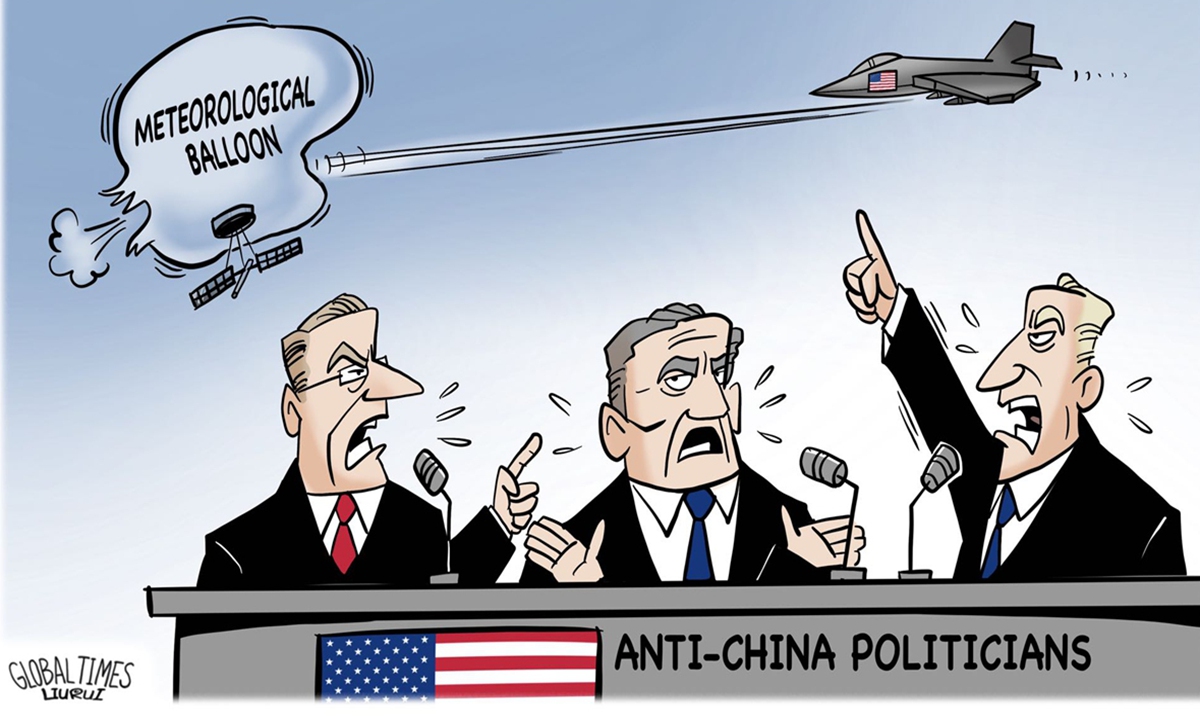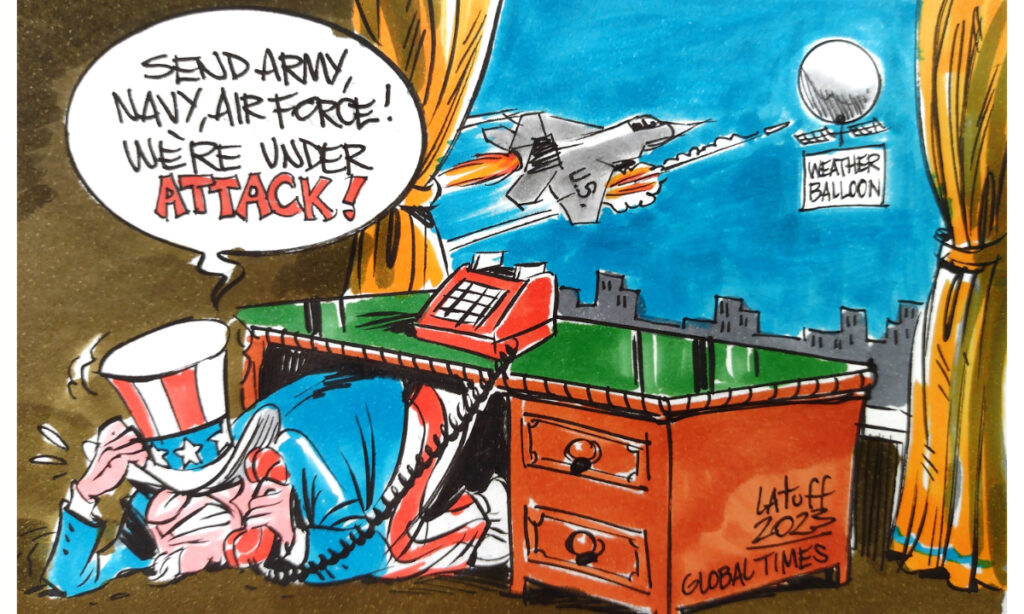The US Air Force shot down an “unidentified flying object (UFO)” over Canada on Saturday local time. But officials from both Canada and the US so far have offered neither further clarification on the capabilities, purpose, or origin of the object, nor one on the need or urgency to shoot it down. This approach has further aroused suspicion and hype in the US media and public opinion.
This is the third time in a week that the US military has shot down an object in North American airspace. The US Air Force, which ranks first in the world, has mobilized troops before for UFOs, which has produced a dramatic effect in global public opinion equal to shooting a mosquito with cannon. The F-22, an advanced US military fighter that has undertaken such a “heavy task” to attack the object, has also been dubbed the “Balloon Killer” on the internet. Besides, the US and Canada also made a fool of themselves: The North American Aerospace Defense Command detected another radar anomaly on Saturday night. The fighter jets took off again, and the airspace in Montana was closed, but it turned out to be a false alarm.
Although the US and Canada claimed that the UFO over Canada posed a “reasonable threat” to the safety of civilian flights, judging from the public opinion reaction, this reason was at least of minor importance in the decision-making process of shooting down the object. Some US media said that oil field operators in the area where the incident occurred may use drones and balloons in their operations, and some US meteorologists said that a weather balloon lost contact. This makes people wonder if it was the US military that messed things up. However, it is clear that Washington is more concerned about the “shooting down” itself ̶ both the White House and Pentagon hoped to shoot down this object as soon as possible to reduce any feeling of hesitation or weakness the outside world would have toward the US in the face of possible threats. As for whether this object belongs to the US or whether it is a threat, these questions have to wait until after it is shot down. This is obviously not a conventional and logical approach.
In periods of non-war, it is difficult for people to imagine a superpower repeatedly using advanced fighter jets to shoot down UFOs preemptively. But against the atmosphere of high tension with China, this absurd and expensive large-scale political behavioral art just took place. While several US media outlets have pointed out there is no indication of a link between these UFOs and China, the grand takeoff of US warplanes apparently satisfied some people’s appetite for the “China threat” and praised the Biden administration for being “more sober” this time. This has undoubtedly raised the cost of the Biden administration’s emergency response, compressing its diplomatic and political space.

Illustration: Liu Rui/GT
Washington’s tough stance is evidently for some domestic critics. The outside world does not have much interest in the US partisan affairs, but this kind of disorder has affected the country’s normal decision-making. It has made the US, which is in a “stringent state” at any time, more edgy and unpredictable. In particular, some of its practices are exaggerated and bizarre to the outside world, and even a little morbid, but they make some people in the US as excited as if they are “high on drugs.” It is not a good sign for the world if the country with the strongest military is constantly surrounded by this kind of extreme emotion and sees everything as a “threat” and thus wants to destroy it.
There are fair, reasonable, and lawful ways to deal with UFOs that appear in the airspace. There are a number of internationally accepted and coordinated methods by default, and the Convention on International Civil Aviation regulates unidentified civil aircraft. But Washington’s approach now is to attack the so-called UFOs rashly regardless of the consequences, and even show off its force in this way. This is a terrible start. Especially with US public opinion fanning the flames, Washington may become even more obsessed with the misuse of force, and even simplify the authorization of the use of force. This will expose civil aircraft to potential danger, including, of course, those of the US itself.
“Shooting a mosquito with cannon” is really happening in today’s US. If Washington is willing to spend taxpayers’ money on this kind of political playacting, simply let it do it, which will only further deepen the impression that the US worships force and breaks the rules. And that does not make the outside world feel the “strength” of the US. Instead, it exposes more of its fragility and radicalism. Regardless of the state in which “every bush and tree looks like an enemy” or “self-directing and self-acting,” such drama is absurd and dangerous to the world.
(Global Times)




